Roof damage can happen slowly over time, or because of rough weather. Wear and tear can lead to essential repairs or replacement, but most of the time it is the immediate damage repairs from a storm or high winds that end up causing homeowners or business the most stress. There are several different types of roof damage you may be dealing with.
Roof damage can look like moisture issues, punctures and cracks, torn or broken shingles, worn down roof parts, sitting water, and damage to the structure. If you are hoping that insurance will cover roof damage, it typically has to be caused by an extreme weather event. These could be straight-line winds, heavy thunderstorms, hail storms, blizzards, and tornados. Your homeowner’s insurance normally will also cover roof damage from broken tree limbs fall on your roof due to strong storms. The decision for coverage ultimately based on what your insurance company finds during the inspection. If there’s enough roof damage to certify a full replacement then it should be covered.
Common Types of Covered Roof Damage
Insurance policies can vary greatly, but most homeowners insurance policies cover roof damage that is sudden, unexpected, and comes from an external force. Here are some common scenarios:
- Weather-Related Damage:
Severe weather events, such as hailstorms, hurricanes, tornadoes, and heavy snowfalls, can cause significant damage to your roof. Insurance typically covers such damage, provided it was not due to neglect or a lack of maintenance. - Fire:
Damage resulting from fires, whether originating from your home or spreading from an external source, is usually covered. This also includes damage from lightning strikes. - Vandalism and Malicious Acts:
If your roof suffers damage due to vandalism or malicious mischief, your insurance policy is likely to cover the repairs. This is considered an unforeseen and uncontrollable event by homeowners. - Falling Objects:
Damage caused by falling objects, such as tree branches or debris during a storm, typically falls under the coverage of most insurance policies.
Exclusions and Limitations
While many scenarios are covered, there are exclusions and limitations to be aware of:
- Wear and Tear: Damage resulting from aging and normal wear and tear is usually not covered by insurance.
- Improper Maintenance: Homeowners are expected to maintain their roofs. Neglect or improper maintenance that leads to damage may not be covered.
- Certain Natural Disasters: Depending on your location, some natural disasters, like earthquakes and floods, may not be covered under a standard policy and may require additional coverage.
Making a Successful Insurance Claim
To increase your chances of a successful claim, follow these steps:
- Immediate Inspection: After a damaging event, inspect your roof for any signs of damage.
- Documentation: Take detailed photos of the damage and keep records of any repairs and maintenance work done on your roof.
- Prompt Reporting: Report the damage to your insurance company as soon as possible. Delaying can complicate your claim.
- Professional Assessment: Consider hiring a professional to assess the damage. Their report can support your claim.
Understanding what your homeowners insurance covers regarding roof damage is crucial in ensuring you’re adequately protected. While policies generally cover unexpected, external damage, exclusions exist. Being proactive in maintenance, knowing the specifics of your policy, and following the correct steps when making a claim can help ensure your roof is repaired with minimal stress and out-of-pocket expenses. Always consult with your insurance provider for the most accurate information about your specific coverage.

